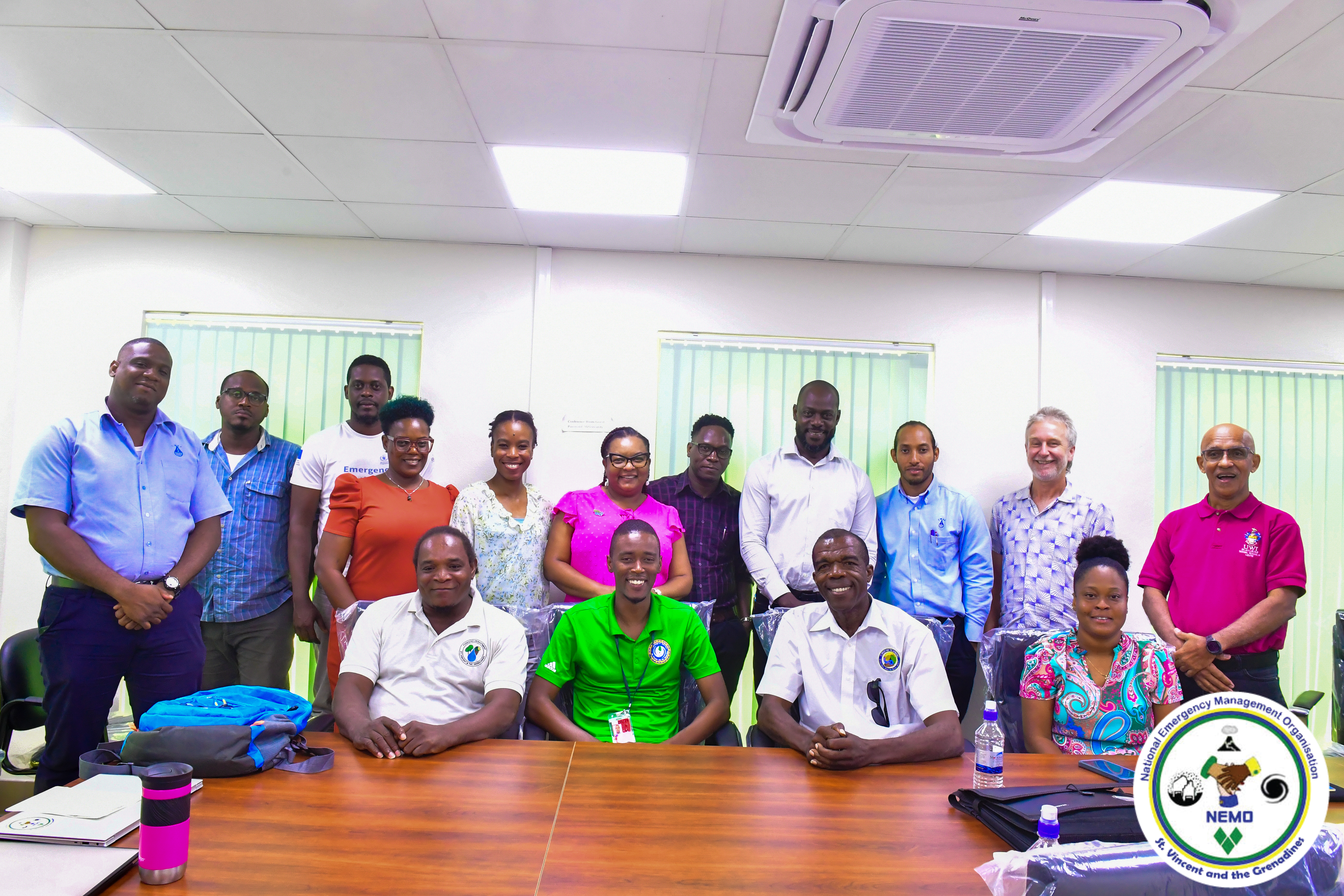17th October, 2024
The benefits of rainfall data captured by rain gauges installed at water catchments and other strategic areas above the foothills of the La Soufriere volcano featured during discussions at a Lahar Modelling Workshop, held earlier today, (17th October, 2024), at the Ministry of National Security Conference Room.
The workshop was hosted by the National Emergency Management Organisation (NEMO) in collaboration with the University of the West Indies (UWI) Seismic Research Centre (SRC) and the School of Earth Sciences, University of Bristol.

Delivering remarks at the activity, Professor Richard Robertson, Geologist of the SRC at the UWI, St. Augustine Campus, said studies on the impact of lahars have been ongoing since the explosive eruptions at the La Soufriere volcano in April, 2021.
Robertson said data from the rain gauges will also help to provide timely hazard warnings, particularly to residents in communities along the foothills of the volcano, that are prone to lahars following intense rainfall in the interior mountain areas.
Jeremy Phillips, Professor of Volcanology at the University of Bristol noted that data from the rain gauges can also be utilized by various agencies of government, including NEMO and the SVG Meteorological Office, among others, in the performance of their respective duties.
Participants in the one-day workshop included representatives from NEMO, the Ministry of Health & the Environment, Central Water & Sewerage Authority (CWSA), SVG Meteorological Office, National Parks Rivers and Beaches Authority, Physical Planning Unit, Department of Forestry and the Climate Centre.
The activity was designed to:
- To introduce participants to sediment flows (lahars, debris flows, flash floods) and the characteristics that needs to be reproduced in a model.
- To conduct a practical session to introduce participants to the Lahar Flow web tool interface and the setting up of simulations.
- To introduce participants to the parameterization of physical processes in Lahar Flow and to conduct a practical exercise. A set of simulations with different parameter values in Lahar Flow will also be conducted as part of this session.
- To introduce participants to post-processing model results from Lahar Flow and practical tips on running reliable simulations, and;
- To discuss specific uses of the model, ongoing support, and the way forward.
The Lahar Modelling Workshop was a follow-up to a previous training session held on November 17th, 2021 as part of efforts to increase local knowledge and building capacity in the area of lahar modelling.
-End-
